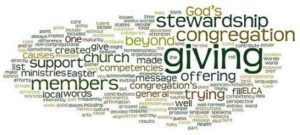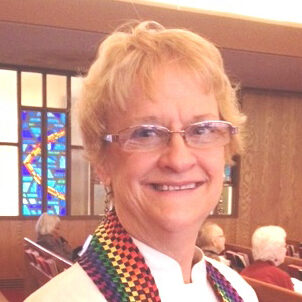Creating a Narrative Spending Plan
How can we build a Narrative Spending Plan, or Narrative Budget? Church leaders and pastors are familiar with the process of establishing a line-item budget, but a Narrative Budget is done a different way. It starts by forming a small group of church leaders who are familiar with the church’s current ministries, including the pastor.
 Each local church develops its own creative way of doing it, but these are the basics:
Each local church develops its own creative way of doing it, but these are the basics:
- Identifying Ministry Dimensions
What are the three or four core dimensions of our congregation’s ministry? We’re not talking about individual programs here, but essential umbrellas that make this church the Church. It also may include an aspect that is part of the congregation’s essential DNA. Here are four real examples, with sample programs under each category.
I:
+ Spiritual Formation – Ex: Worship; children, youth and family ministries, Sunday school; Bible studies and small groups
+ Compassion and Service – Ex: Food for the hungry; local homeless and advocacy ministries; international mission; denominational and ecumenical shared ministries
+ Congregational Care – Ex: Hospitality; fellowship events and groups, classes, women’s and men’s groups; shawl ministry; Communion to shut-ins.
II:
+ Worship – Connecting to God
+ Congregational Care – Connecting to one another
+ Faith Development – Connecting to our own best selves
+ Mission and Outreach – Connecting to God’s agenda for the world.
III:
+ Connectional Ministry – Local, independent and denominational mission
+ Christian Education – Learning for all ages; materials and support for short term and ongoing groups
+ Community and Regional Outreach
+ Media Plan – Witness and Welcoming.
IV:
+ Open Hearts – Ex: Various events that reach out to parts of the church family; celebrations of the Church Year; a weekly newsletter; talent, equipment and supplies for worship and music ministries; a repainted parsonage and improvements on the place we call home; and pastoral leadership for worship, teaching and personal support
+ Open Hands – Ex: Peace with Justice and Church-and-Society work as a congregation; weekly outreach and Thrift Shop; maintenance and upgrades of the church and other buildings to host weekly and monthly meetings of community groups; participation in CROP Walk, AIDS Walk, etc; special offerings in response to world disasters
+ Open Minds – Ex: Curriculum and materials for Sunday school leaders; facilities and teaching materials for adult learning groups; involvement in community studies; support through Shared Ministries for seminaries, colleges and training; a local church scholarship for single heads of households.
Where a given church places a specific program depends upon the nature of the group and its community context at this time. For example, a congregation may put the Youth Group under congregational care for the youth in its church family. Another sees the program as community outreach, since most of the participants are in the community. Or they may see it as spiritual formation, since they are offering a biblical basis for living, shaping young minds, hearts and lives.
2. Allocating Time for Staff and Facilities
Pastors are not overhead! Neither are other staff members, from church administrators to gardeners. In this second step, we divide up salaries, materials and financial benefits for each person according to our dimensions of ministry. For example, in Model I above, 80% of the cost for a Christian Education staff person might go under Spiritual Formation (for preparing, coordinating and leading the Sunday school and other small groups), 10% under Congregational Care (for connecting with families within the congregation), and 10% under Compassion and Service (for direct community outreach inviting families to attend invitational events). In some situations, it might be 25% or more relating to the community.
The best way to figure out division of the pastor’s time is for him or her to do a not-too-detailed time study for two weeks or a month, and have the pastor divide it up according to the different ministry dimensions. This doesn’t have to be too complicated or a matter of committee oversight: just looking at blocks of time, for example, for visiting in homes, worship preparation, community involvement, etc. Administration is not a category in itself; it’s always for a ministry purpose. For example in Model IV, part of the pastor’s time is named under Open Hearts, and the rest assigned to Open Hands (in community involvement) and Open Minds (in teaching and group work).
The same process goes for the church’s property and facilities. What ministries are the buildings used for? For example, Alcoholics Anonymous and other 12-step groups may meet there 20% of the time (in Model II would it be put under Mission and Outreach, or Faith Development?), fellowship groups may meet there 30% of the time (under Congregational Care), and worship-related events might take place there 50% of the time. Once we decide the percentages, we can portion out the utilities and other related costs.
Putting It All Together
For most churches, the Narrative Spending Plan ends up on one or two pages with a single money amount underneath each ministry-dimension category. We may decide to add a few bullets above that number under each category for what we would like to add or expand. When we do that, the piece can be handed out as part of the Financial Commitment response time, to encourage givers. Afterwards, we can take the money amounts off the page and use it as a flyer that answers the question, “What does this congregation do, anyway?” to put in the pew racks and take it around to the community.
Inevitably this process of creating a Narrative Spending Plan produces an “Aha!” somewhere along the way. For example in Model II, maybe we hadn’t realized we put this much energy into Community and Regional Outreach, or so much or so little into Witness and Welcoming. These realizations can lead to celebrating what we’re doing and to deciding to change our emphasis to rebalance the church’s work in the year ahead. It becomes a process of greater awareness for church leaders and an outreach tool for a variety of events.
See also: What Is a Narrative Budget, Ways to Share Your Narrative Budget


